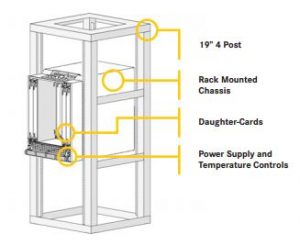 How to choose the appropriate rack size of a system
How to choose the appropriate rack size of a system
February 12, 2016 REDWIRE is news you can use from leading suppliers. Powered by FRASERS.
Posted by Harting Canada Inc
The family-owned HARTING Group is a global leader in connectivity solutions. HARTING invented the modular connector and... Read more
Subscribe
Free REDWIRE e-newsletter

When it’s time to purchase a new rack-mounted system, how do you balance potential future needs with current project allocations? This is a topic that Harting explored in a recent white paper entitled, “Choosing Appropriate Rack Size of a System”. The white paper looks at the key factors to consider during selection, and examines potential options.
Conderations
Rack-mounted chassis systems consist of a chassis that has slots for managing daughter-cards, which link to each other electrically through a backplane. When specifying a chassis, customers must determine the communication protocol, the card size and the number of slots required. The last variable — the number of slots — is often difficult to determine. Some key considerations include:
- Price: Retail price increases as the size of the system increases. Consider whether this relationship is linear to the number of slots. Harting says the relationship is non-linear, and that larger sizes grow exponentially in price.
- Rack size: The next consideration Harting investigated is the relationship between the number of slots available to the size in a 19-inch rack. This number is often determined by the current needs of the platform; however, in many cases, the number of electrical connections required will expand beyond the expectations at the inception of a system design. If more connections are required, there are two options: replace the system with a larger available size, or add a twin system and link them with cabling.
Conclusion
After exploring both options in greater detail, the white paper determines a number of conclusions. First, if future expansions are a possibility, a larger system should be considered. Simply adding systems after the fact is much less linear, because much of the I/O is used to communicate with the twin system.
In the end, the white paper suggests that implementing a rack-mounted chassis with additional slots allows the potential for future expansion at a cost much lower than expanding an installed system through other means.
To learn more about this topic, contact Harting Canada.
Share
Posted by Harting Canada Inc
The family-owned HARTING Group is a global leader in connectivity solutions. HARTING invented the modular connector and... Read more